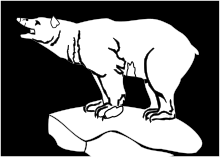49th (West Riding) Infantry Division
| West Riding Division 49th (West Riding) Division 49th (West Riding) Infantry Division 49th (West Riding) Armoured Division 49th (West Riding and Midland) Infantry Division |
|
|---|---|

Second World War Division badge, third pattern, replaced the second pattern in 1943.
|
|
| Active | 1908–1919 1920-1945 1947-1967 |
| Country |
|
| Branch |
|
| Type |
Infantry Armoured from 1947 |
| Size | Division |
| Nickname(s) |
The Polar Bears (Second World War) Barker's Bears (Second World War) |
| Engagements | First World War Second World War |
| Battle honours |
Somme (1916) Normandy The Odon Scheldt |
| Commanders | |
| Notable commanders |
Evelyn Barker Gordon Holmes MacMillan |
| Insignia | |
| Identification symbol |
 First World War Division sign, used on signboards. |
| Identification symbol |
 Inter war and early Second World War badge worn at the top of the sleeve, made of White metal. |
| Identification symbol |
 Second World War badge, second pattern, adopted in Iceland. |
The 49th (West Riding) Infantry Division was an infantry division of the British Army. The division was formed in the Territorial Force on 1 April 1908 as the West Riding Division. The division fought in the Great War in the trenches of the Western Front, in the fields of France and Flanders. During World War II the division fought in the Norwegian Campaign and in North-western Europe. After the Second World War it was disbanded in 1946, then reformed in 1947. It remained with the Northern Command until finally disbanded in 1967.
The division was originally raised as the West Riding Division when the Territorial Force was created in 1908. In 1915, during the Great War, it was designated the 49th (West Riding) Division and given the White Rose of York as its insignia.
During World War II, the 49th Division first saw action beginning on 15–17 April 1940 when two of its brigades took part in the short and ill-fated landings in Norway that were intended to retake the ports of Trondheim and Narvik from the German Army. The campaign was a complete disaster and the division withdrew from Norway in May 1940.
The division's 146th and 147th Infantry Brigades were thereafter stationed in Iceland and the 148th Infantry Brigade became a training brigade and was no longer a part of the division. As a result, a new divisional insignia, featuring a polar bear standing on an ice floe, was adopted. The idea was from the divisional commander, Major General Evelyn Barker. In 1942, the division was transferred back to the United Kingdom where the 70th Brigade, from the disbanded 23rd Division, was assigned to the 49th Division.
...
Wikipedia
